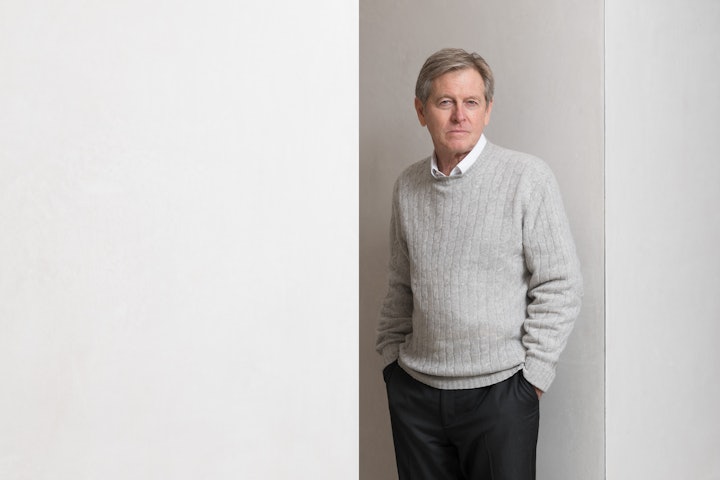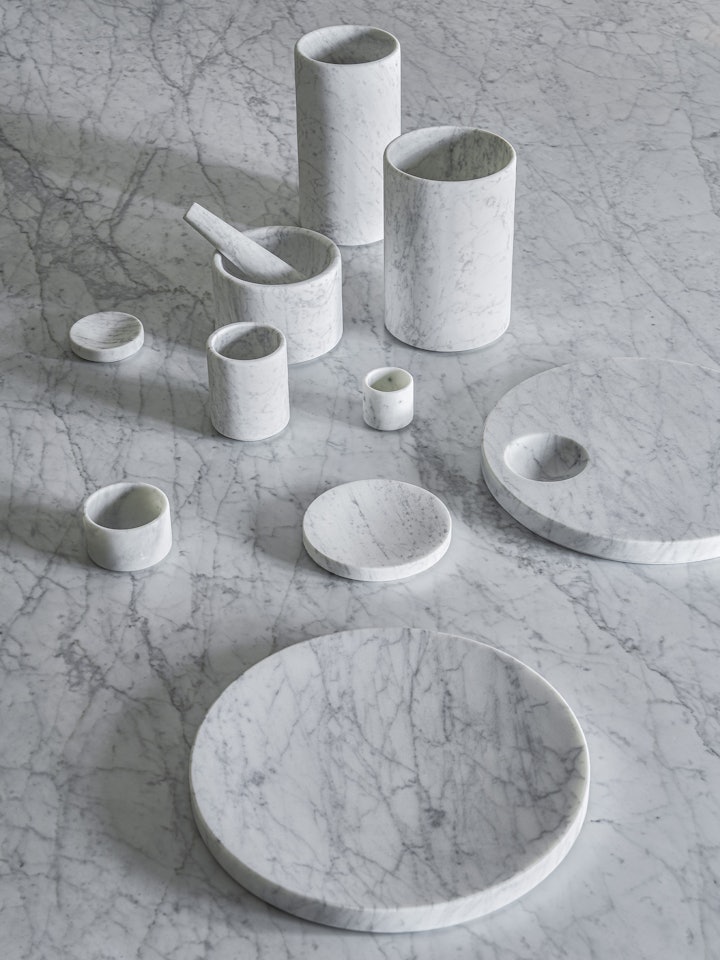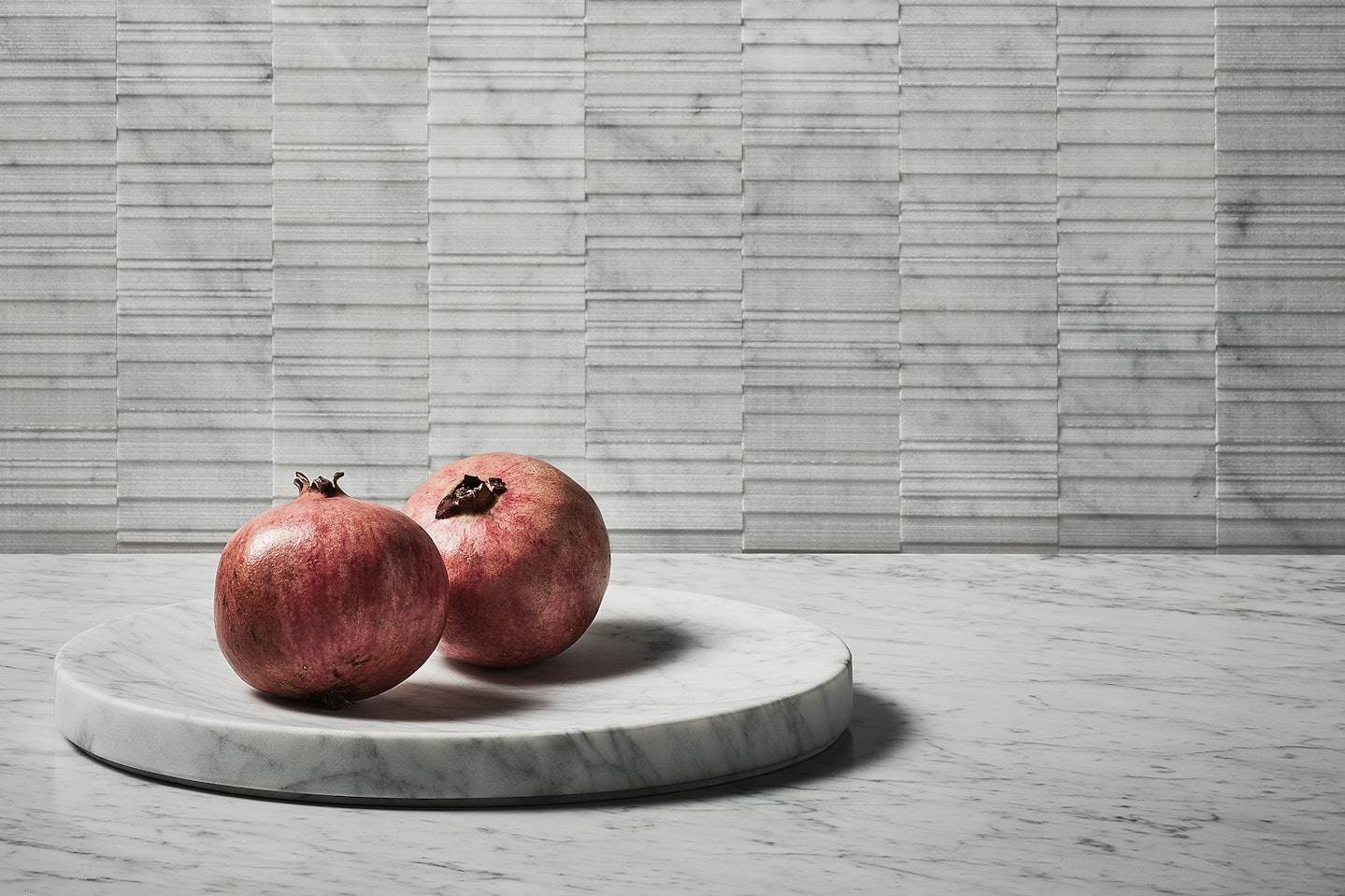Ellipse by John Pawson
03.2022
Whenever I go to the Salone, I tell myself that I will concentrate on seeing only a few things properly, but once I am there the energy takes over and I end up rushing around like everyone else
Launched in Milan at this year’s Salone del Mobile, the Ellipse collection is a family of vessels and utensils for the home designed by long-time Salvatori collaborator John Pawson. Sharing a geometry and materiality – each piece is shaped from a continuous piece of Bianco Carrara marble – the collection is typical of Pawson’s expressive, minimal style: the simple forms of the vessels evoking a sense of calm and a spirituality.
Pawson, the architect responsible for the new home of the London Design Museum, is renowned for bringing warmth to minimal design. For him, it is not simply a case of removing, of stripping back, but a process of thinking through every facet of the design, focusing on detail – whether for large scale architectural projects or products for the home. “There’s a quote by the French philosopher Blaise Pascal,” Pawson says when we speak to him about the new collection. “’I have made this letter longer than usual, only because I have not had the time to make it shorter.’ In a similar way, in design it can take a very long time to make complex things simple.”

What did you make of the Salone this year?
Whenever I go to the Salone, I tell myself that I will concentrate on seeing only a few things properly, but once I am there the energy takes over and I end up rushing around like everyone else. I was very happy with the installation of the Ellipse collection at the Salvatori showroom – [CEO] Gabriele Salvatori and I have collaborated on projects for a number of years now and he knows what is important to me, in the work itself and in how it is shown.
How did the Ellipse collection come about?
I had a very simple intention – to make a family of vessels and utensils for the home. I started with an idea of a series of forms that shared aspects of geometry and proportion, which then developed into a set of functional vessels, each characterised by an internal curve that relates to its particular ritual of use.

What was the process of finding the final forms?
With objects at this scale – unlike buildings – you can carry on making prototypes of a design until everyone is happy. The transition from drawing to the reality of a physical object inevitably results in a lengthy back and forth process with the factory, but one learns so much in the course of this exchange of perspectives and from the manufacturing process itself.
What ideas unify the collection?
Each piece shares the same rigorous simplicity of form, materiality, function, geometry and proportion, but it’s about more than that. Ultimately the important thing is the continuous line of thought that unifies all my work.
What are the particular qualities that natural stone brings to this collection?
I love the tactile surface and heft of Bianco Carrara marble and its natural patterning, which means that no two vessels will ever be identical. I am also drawn to materials where there is scope to work without the distraction of junctions. Every piece in the Ellipse collection is fabricated from a single, seamless block.
How do the contrasting polished and sandblasted textures feature in the design?
When a design is so stripped back, small details carry a charge. I have used variations of polished and textured finishes to create subtle differentiation between flat and contoured surfaces, for the eye and the hand.
